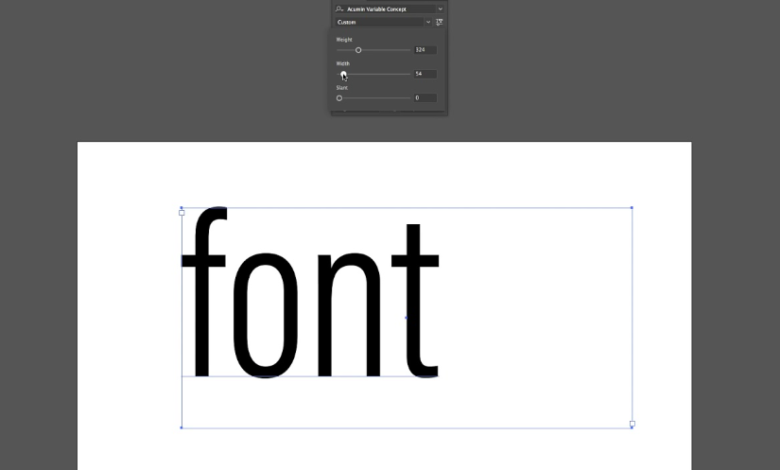Why Designers Prefer Variable Fonts Over Standard Fonts

Typography plays a critical role in design, shaping the readability, style, and overall visual impact of a project. In recent years, variable fonts have gained immense popularity among designers, offering flexibility, efficiency, and creative freedom that standard fonts often cannot match. Understanding why designers prefer variable fonts over traditional fonts helps explain the shift in modern typography trends.
Understanding Variable Fonts
Variable fonts are a type of font technology that allows multiple styles and weights to exist within a single font file. Unlike standard fonts, which require separate files for each weight or style (such as regular, bold, italic, or light), variable fonts can adjust these attributes dynamically. Designers can create a spectrum of styles, from thin to ultra-bold or condensed to expanded, without needing to install multiple font files.
This technology is based on OpenType Font Variations (OpenType 1.8) and enables smooth interpolation between styles. It not only saves storage space but also provides greater flexibility in design.
See also: Simplifying Vendor Payments With Centralised Finance Systems
Enhanced Flexibility and Control
One of the main reasons designers prefer variable fonts is the unparalleled control they offer. With standard fonts, you are limited to predefined weights and styles. For instance, if a project requires a medium weight between regular and bold, designers would either have to choose one and compromise or use multiple font files, which could slow down the workflow.
Variable fonts solve this issue by allowing precise adjustments. Designers can fine-tune weight, width, slant, and optical size to meet specific design needs. This flexibility enhances creativity, enabling designers to experiment with subtle differences in typography without being restricted by standard font options.
Improved Performance and Efficiency
Variable fonts also improve website and application performance. Using multiple standard font files can increase page load times because each file must be downloaded separately. In contrast, a single variable font file can cover all required weights and styles, significantly reducing the number of HTTP requests and improving site speed.
This efficiency is especially important in responsive web design, where fonts must adapt to different screen sizes and resolutions. Variable fonts allow designers to maintain consistent typography across desktop, tablet, and mobile devices without bloating the website with multiple font files.
Better Design Consistency
Consistency is key in branding and professional design. Standard fonts can create inconsistencies if multiple font files are slightly different or if a designer uses approximations for intermediate weights. Variable fonts eliminate these inconsistencies by providing a continuous range of styles within one cohesive font.
For example, a designer can smoothly transition between thin body text and bold headings while maintaining the same font family. This creates a unified look and feel, which is crucial for both digital and print projects.
Creative Possibilities
Variable fonts open up new creative possibilities that standard fonts cannot offer. Designers can animate font weight or width, creating dynamic and interactive typography for web pages, apps, and presentations. These animations can add visual interest and engage audiences more effectively than static text.
Additionally, variable fonts allow responsive typography, where text adapts in real-time to the layout, screen size, or user interaction. This adaptability enhances user experience and ensures that the design remains visually appealing across different platforms.
Conclusion
Designers prefer variable fonts over standard fonts because they combine flexibility, efficiency, consistency, and creativity in a single solution. The ability to fine-tune styles, reduce file sizes, and maintain a cohesive visual identity makes variable fonts a modern essential for professional design projects.
As web and mobile technologies continue to evolve, variable fonts provide designers with the tools to create dynamic, responsive, and aesthetically pleasing typography. By embracing variable fonts, designers can save time, enhance performance, and deliver innovative designs that meet the demands of today’s digital and print environments.

